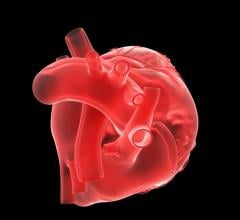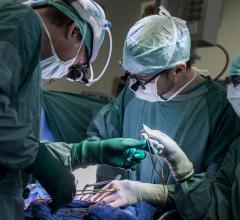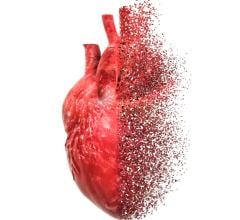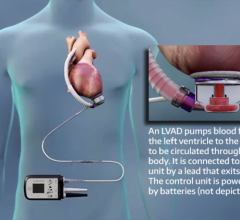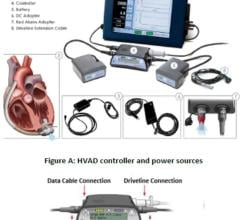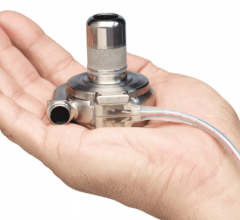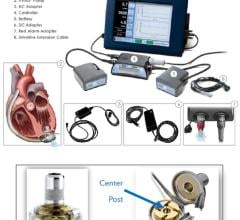
Daniel G. Tang, Virginia Commonwealth University Medical Center assistant professor of cardiothoracic surgery, explains the SynCardia Total Artificial Heart implantation procedure.
August 1, 2014 — For the first time, cardiac surgeons, medical professionals and the public can watch the implantation of the SynCardia temporary Total Artificial Heart in a peer reviewed case report paper and matching video posted on the Journal of Visualized Experiments website.
The 16-minute video accompanies “Implantation of the SynCardia Total Artificial Heart,” a July 18, 2014 paper by cardiac surgeons at Virginia Commonwealth University Medical Center.
The paper and video both describe the case of a 60-year-old male with hypertrophic cardiomyopathy. Both detail the implantation surgery. They also discuss perioperative complications, postoperative care and selection of good candidates for the procedure.
“Patients often present with cardiogenic shock and multi-system organ dysfunction,” according to the paper by Daniel G. Tang, Keyur B. Shah, Michael L. Hess and Vigneshwar B. Kasirajan. “Excision of both ventricles and orthotopic replacement with the [SynCardia Total Artificial Heart] is an effective…therapy for rapid restoration of blood flow and resuscitation.”
Heart failure patients who are extremely sick can get a second chance at life with the SynCardia Total Artificial Heart. It is the only approved device that eliminates the source of end-stage biventricular (both sides) heart failure in which the native heart ventricles can no longer can pump enough blood for the patient to survive.
“The main advantage of the Total Artificial Heart over left ventricle assist devices [LVADs] is the [SynCardia Total Artificial Heart] allows for high-flow biventricular support,” Tang, VCU assistant professor of cardiothoracic surgery, said in the video, “as well as the ability to treat a wide range of complex cardiac pathology that may not be ideally treated with isolated [LVAD] support.”
The SynCardia Total Artificial Heart is becoming the standard of care for addressing end-stage biventricular heart failure. “Refinements in the current generation SynCardia [Total Artificial Heart], patient selection, management of pericardial space, as well as peri-operative management of the patients, have led to a marked improvement in patient outcomes,” Tang said.
More than 1,300 implants of the SynCardia Total Artificial Heart accounts for over 400 patient years of life on the device. Since January 2011 more than 400 SynCardia Hearts have been implanted.
For more information: www.syncardia.com


 June 19, 2024
June 19, 2024 
